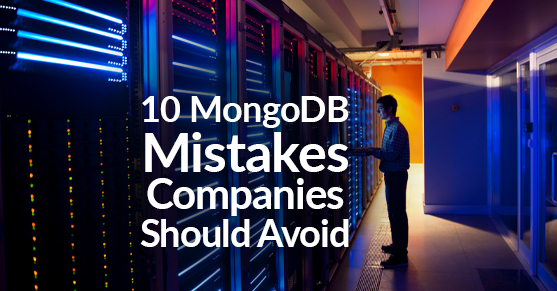MongoDB is one of the most popular NoSQL databases for modern web applications. It is designed to be scalable, flexible, and easy to use. However, like any technology, it is not immune to misuse or abuse. In this article, we will discuss the top 10 things a company should not do with MongoDB.
- Do not use MongoDB as a relational database
MongoDB is a document-based database, which means it is not designed to be used like a traditional relational database. Trying to force it to behave like a relational database will lead to poor performance and scalability issues. Instead, use MongoDB for what it was designed for: storing and retrieving JSON-like documents.
- Do not ignore indexing
MongoDB supports indexing to speed up queries. Failure to properly index your data can lead to slow query times and poor performance. Make sure to create indexes on fields that are frequently used in queries.
- Do not over-index
While indexing is important, it is also possible to over-index your data. This can lead to slow write times and increased storage requirements. Only create indexes on fields that are frequently used in queries and avoid creating indexes on every field.
- Do not use too many shards
MongoDB supports horizontal scaling through sharding. While sharding can help improve performance and scalability, using too many shards can lead to increased complexity and reduced performance. Make sure to carefully consider the number of shards needed for your workload.
- Do not ignore data modeling
Data modeling is an important part of using MongoDB effectively. Failure to properly model your data can lead to poor performance and scalability issues. Make sure to understand your data requirements and model your data accordingly.
- Do not ignore security
MongoDB supports authentication and access control. Failure to properly secure your MongoDB instance can lead to unauthorized access and data breaches. Make sure to use strong passwords, enable authentication, and restrict access to only necessary users.
- Do not ignore backups
Data loss can occur due to hardware failures, software bugs, or human error. Failure to backup your data can result in permanent data loss. Make sure to regularly backup your MongoDB data and test your backups to ensure they are working correctly.
- Do not ignore query optimization
MongoDB supports complex queries, but these queries can be slow if not optimized correctly. Make sure to understand how queries work and optimize your queries to ensure they are fast and efficient.
- Do not ignore scalability
MongoDB is designed to be scalable, but failure to properly scale your instance can lead to poor performance and availability issues. Make sure to carefully consider your scalability requirements and scale your instance accordingly.
- Do not ignore monitoring
Monitoring your MongoDB instance is important to ensure it is running correctly and to detect issues before they become serious. Make sure to monitor your instance for performance metrics, errors, and other issues.
In conclusion, MongoDB is a powerful database that can help improve the performance and scalability of your applications. However, failure to follow best practices can lead to poor performance, scalability issues, and security vulnerabilities. By avoiding the 10 mistakes listed above, you can ensure your instance is secure, performant, and scalable.
For questions, please contact us.

